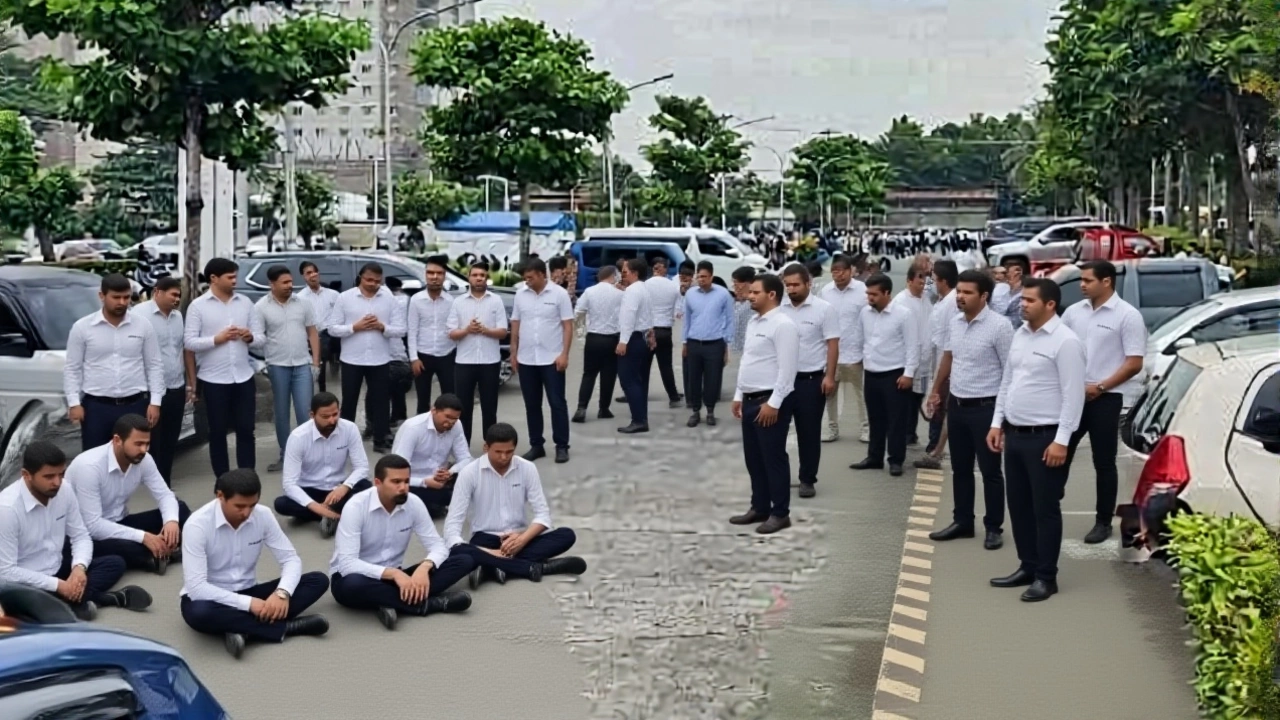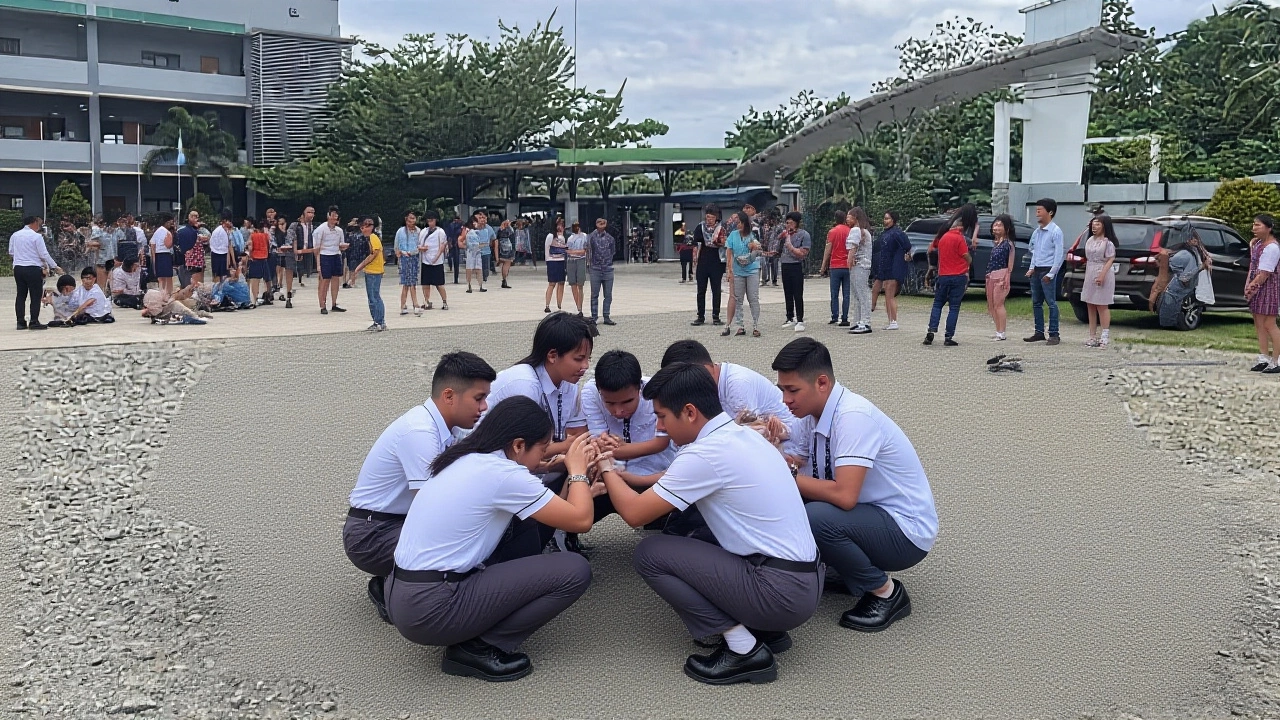Shallow 7.4‑magnitude quake hits Mindanao on Oct 10 2025, killing six, sparking a fresh tsunami alert after a 6.9‑magnitude aftershock, with Red Cross and PHIVOLCS leading response.

- Created by: Gareth Rubens
- Completed on: 10 Oct 2025
- Categories: World
On the morning of 10 October 2025, a shallow earthquake measuring 7.4 magnitude struck off the coast of Mindanao, the Philippines’ second‑largest island, prompting a tsunami warning and, hours later, a 6.9‑magnitude aftershock – the biggest of more than 300 tremors recorded.
The Philippine Institute of Volcanology and Seismology PHIVOLCS logged the quake at 07:42 GMT+8, noting a shallow depth of roughly 10 km, which amplified ground shaking across the region. The main shock lasted about 35 seconds, rattling buildings from coastal municipalities to inland cities.
In Davao City, the provincial capital, power lines snapped and mobile networks faltered, leaving roughly 30 % of households without electricity and 45 % with spotty internet. Streets turned into chaos as drivers stalled, bridges cracked and emergency crews struggled to navigate impassable roads.
Within minutes, the National Disaster Risk Reduction and Management Council (NDRRMC) issued a tsunami alert for the eastern shoreline. The warning was lifted after three hours when tide gauges showed no abnormal rise. Yet at 12:15 GMT+8 the 6.9‑magnitude aftershock reignited concerns, and officials reinstated a fresh tsunami advisory for the same coastal stretch.
Richard J Gordon, chairman and chief executive of the Philippine Red Cross, told reporters, “We have teams on the ground in Davao and Cagayan de Oro assessing damage and providing relief. Our priority is to reach families who lost shelter and basic supplies.”
Government agencies, led by PHIVOLCS, continued to broadcast aftershock probabilities, urging residents to stay clear of unstable structures. A spokesperson from PHIVOLCS said, “The aftershock sequence is expected to persist for several days. Communities should follow evacuation orders and keep emergency kits ready.”
The tremors were felt as far north as North Sulawesi, Indonesia, where residents reported swaying furniture and brief panic in the city of Manado. Local authorities there briefly activated their own tsunami monitors, although no waves materialised.
This is not the first major seismic event to hit Mindanao. In April 2019, a magnitude‑6.6 earthquake rattled the same fault line, killing 14 people and destroying over 1,200 homes. Compared with that incident, the 2025 quake produced a higher death toll in a shorter timeframe, underscoring the region’s vulnerability to shallow, offshore ruptures.
Seismologist Maria Santos of the University of the Philippines warned, “The subduction zone off Mindanao is capable of generating mega‑earthquakes. Communities need long‑term retrofitting programs, not just emergency response.”
Looking ahead, PHIVOLCS plans to deploy additional portable seismometers along the coast and to run public‑information drills in schools. The Philippine Red Cross has pledged ₱150 million (about $2.7 million) for temporary shelters and medical aid, while the national government is assessing the cost of repairing the shattered road network, estimated at ₱3 billion.
Key Facts
- Date & time: 10 Oct 2025, 07:42 GMT+8 (main shock)
- Magnitude: 7.4 (MW) main quake, 6.9 (MW) largest aftershock
- Deaths confirmed: 6
- Affected regions: Mindanao (especially Davao City), North Sulawesi (Indonesia)
- Tsunami alerts: Issued twice, lifted after monitoring
Response Timeline
- 07:42 GMT+8 – PHIVOLCS records the 7.4‑magnitude quake.
- 07:45 GMT+8 – NDRRMC issues first tsunami warning.
- 10:45 GMT+8 – Power outages reported across Davao City.
- 12:15 GMT+8 – 6.9‑magnitude aftershock triggers second tsunami alert.
- 13:00 GMT+8 – Red Cross teams begin door‑to‑door assessments.
- 14:30 GMT+8 – PHIVOLCS advises continued vigilance for aftershocks.

Frequently Asked Questions
How many people were injured in the Mindanao earthquake?
Aside from the six confirmed fatalities, local hospitals treated roughly 28 injured individuals, most with minor fractures or bruises, according to the Davao Regional Medical Center.
What caused the tsunami warnings to be issued twice?
Both the 7.4‑magnitude main shock and the later 6.9‑magnitude aftershock displaced enough seawater to trigger automated tsunami alarms along Mindanao’s eastern coast, prompting precautionary alerts each time.
How is the Philippine Red Cross supporting affected communities?
The Red Cross has set up three interim shelters in Davao City, dispatched 15 rescue units, and allocated ₱150 million for food, water, and medical supplies, as stated by chairman Richard J Gordon.
What steps is PHIVOLCS taking to prevent future disasters?
PHIVOLCS will install additional seismometers along the offshore fault, improve early‑warning dissemination, and conduct community drills in schools to boost preparedness, according to its director‑general.
Why were tremors felt in Indonesia?
The seismic waves traveled through the Celebes Sea, reaching North Sulawesi where the ground motion was strong enough to be noticed, especially in Manado, though no damage was reported.